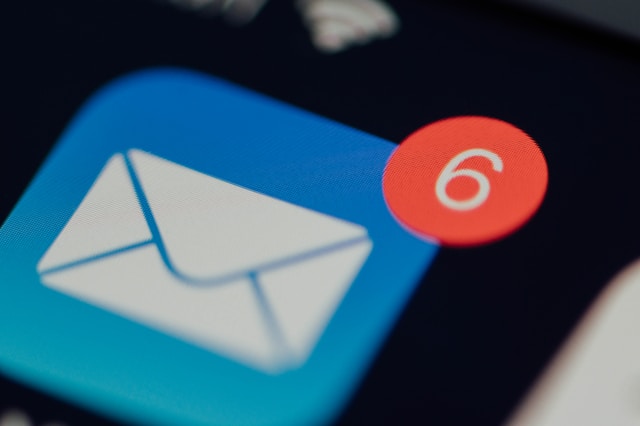In today’s digital world, phishing scams are one of the most common ways cybercriminals try to steal personal information. Whether you’re checking your email, browsing a website, or receiving a suspicious message, it’s crucial to know how to avoid phishing emails and websites to protect your identity and data.
This article will walk you through what phishing is, how to recognize the signs, and what actions you can take to stay safe online.
What Is Phishing?
Phishing is a type of cyberattack where scammers trick people into revealing sensitive information such as login credentials, credit card numbers, or Social Security numbers. These scams are usually carried out through fake emails, websites, or messages that appear to come from a legitimate source like a bank, government agency, or popular company.
The goal of phishing is to exploit trust, urgency, and fear. Once you interact with a phishing link or attachment, hackers may steal your information, install malware on your device, or gain access to your accounts.
Understanding what is phishing and how to avoid it is essential for anyone who uses the internet or email on a regular basis.
Common Signs of a Phishing Email
Recognizing the signs of a phishing email is the first step in preventing a successful attack. Here’s what to watch out for:
1. Suspicious Sender Email Address
Phishing emails often come from addresses that look legitimate at first glance but contain subtle misspellings, extra characters, or odd domain names. Always double-check the sender’s address.
2. Poor Grammar and Spelling
Professional companies rarely send emails full of grammatical errors. Phishing emails frequently contain typos, awkward language, or formatting issues.
3. Urgent or Threatening Language
Phrases like “Your account will be closed!” or “Immediate action required” are designed to pressure you into acting quickly without thinking.
4. Unfamiliar Attachments or Links
If you weren’t expecting an attachment or link, don’t click on it. These are often used to install malware or redirect you to fake websites.
5. Requests for Sensitive Information
Legitimate organizations will never ask for your password, Social Security number, or credit card information via email. If an email asks for this, it’s almost certainly a scam.
Learning to identify the signs of a phishing email is critical to avoiding fraud.
How to Spot Fake Websites
Not all phishing attacks come via email. Many involve fake websites designed to look exactly like real ones in order to trick users into entering their login credentials.
Here’s how to avoid falling for them:
1. Check the URL
Phishing websites often use URLs that look similar to a real site but may include typos, extra characters, or strange extensions. For example, www.paypall.com instead of www.paypal.com.
2. Look for HTTPS and the Padlock Icon
Secure websites use HTTPS and display a padlock icon in the address bar. While this doesn’t guarantee legitimacy, the absence of HTTPS is a red flag.
3. Don’t Click Links Directly
Instead of clicking links in an email or message, type the website URL into your browser manually or use a bookmark.
4. Use Online Tools
Web tools like Google Safe Browsing or VirusTotal can help you verify if a website is flagged for phishing or malware.
Spotting phishing websites is a skill that gets easier with practice, and it’s one of the most important habits for online safety.
Best Practices to Avoid Phishing Attacks
Knowing the warning signs is important, but preventing attacks requires consistent security habits. Here are some of the best ways to protect against phishing attacks:
1. Don’t Click Unknown Links
Be cautious with emails or messages that include links from unknown senders. Always hover over the link to preview the URL.
2. Don’t Download Suspicious Attachments
Avoid downloading files you weren’t expecting. Even if the email appears to be from a friend or coworker, verify with them before opening any files.
3. Use Multi-Factor Authentication (MFA)
MFA adds an extra layer of protection, so even if a scammer gets your password, they won’t be able to access your account without a secondary verification.
4. Keep Software Updated
Outdated software can be vulnerable to phishing-related malware. Regularly update your operating system, browsers, and antivirus tools.
5. Use a Password Manager
Password managers generate and store strong, unique passwords for each site. This helps prevent password reuse and makes phishing websites easier to detect.
6. Educate Yourself and Others
Stay informed about the latest phishing techniques and share that knowledge with family, friends, and coworkers.
Following these email phishing protection strategies can drastically reduce your risk of being scammed.
What to Do If You Suspect a Phishing Attempt
Even with strong habits, it’s possible to encounter a suspicious message or site. Here’s what to do:
-
Do not click any links or download attachments.
-
Report the phishing email to your email provider (Gmail, Outlook, etc.).
-
Forward the phishing email to your company’s IT team, if applicable.
-
Delete the email from your inbox and trash folder.
-
Run a full antivirus scan if you clicked or opened anything.
-
Change your passwords immediately if you entered any login details.
-
Monitor your accounts for suspicious activity.
Taking quick action after a phishing attempt can minimize damage and stop hackers from accessing your accounts or spreading malware.
Trusted Resources and Tools
Here are some helpful tools to keep you protected:
-
Google Safe Browsing – Checks websites for safety
-
VirusTotal.com – Analyzes suspicious files and links
-
Have I Been Pwned – See if your email or password has been compromised
-
Bitwarden / LastPass / 1Password – Secure password managers
-
uBlock Origin – Browser extension that blocks malicious content
Using tools like these adds another layer of security to your online routine.
Final Thoughts
Phishing scams are constantly evolving, but with awareness and smart habits, you can stay a step ahead. Knowing how to avoid phishing emails and websites is one of the most important digital skills you can develop.

